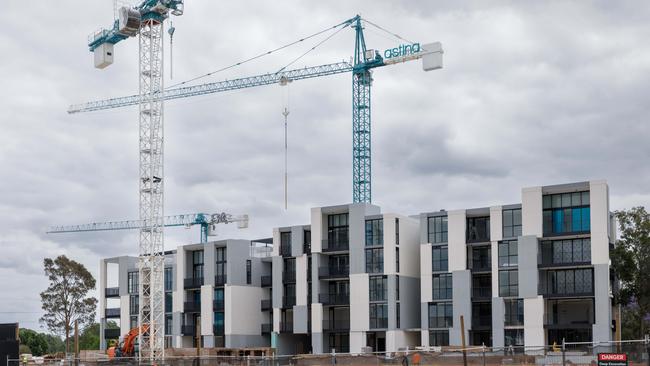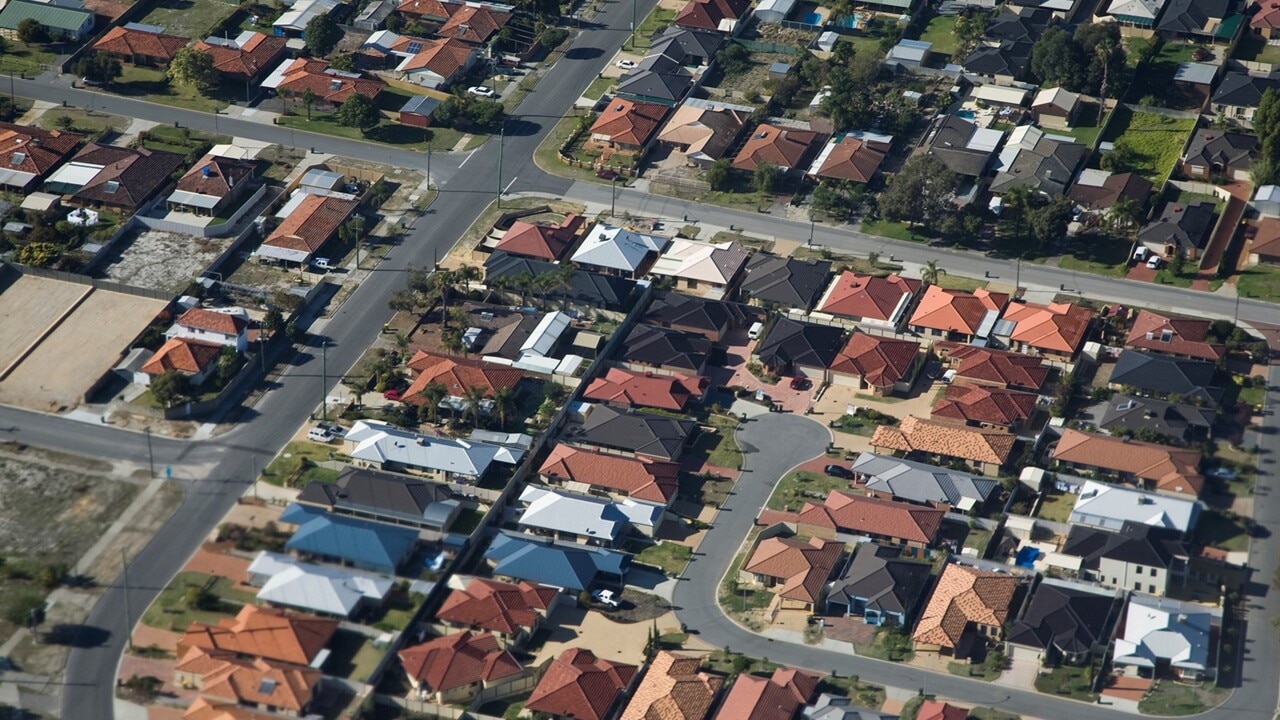Labor’s ambitious home building target at risk
The pace of home-building approvals is failing to keep up with the rapid rise in population, with the relative number of approvals at a multi-decade low.

The Albanese government is set to fall far short of its ambitious goal of building 1.2 million homes over the next five years, as construction approvals plunged to an 11-year low in February.
The number of building approvals dropped to 163,000 over the year to February, new Australian Bureau of Statistics figures revealed, about 80,000 under Labor’s targeted level.
Worse, the pace of approvals is failing to keep up with the rapid rise in population, with only seven building approvals per 1000 people over the past 12 months – a new low in the history of the data stretching back nearly four decades.
CBA senior economist Belinda Allen said approvals were running “quite short” of the government’s objective, “and you would have to go back to 2016 when you have gotten close to those levels” of 240,000 homes built in a year.
Ms Allen said there was no evidence in the data that the housing affordability crisis would ease any time soon. “We are not building enough, and that’s across Australia,” she said.
Opposition housing spokesman Michael Sukkar said overseas arrivals were running at four times the pace of new home builds, and that rents were up 26 per cent since Labor came to power.
Mr Sukkar said the ongoing decline in new home builds “is just another nail in the coffin for Labor’s 1.2 million homes promise”.
“There is already so much evidence that this will not be achieved by a mile,” he said.
Rental affordability is at its worst in at least 17 years, according to PropTrack analysis, with the availability of properties at the lowest levels on record.
As rents surge, the situation for potential home buyers has also become more dire after a 40 per cent jump in national property prices since the start of the pandemic, making it the third-biggest boom in history.

NAB head of market economics Tapas Strickland said the low and falling rate of building approvals stood in sharp contrast to the rapid rise in net migration over the past two years that had heaped further pressure on housing.
“The population aged 15 years plus has increased by 619,000 over the past year,” he said. “This has taken the ratio of the new population per dwelling approval to 3.8, near its highest level in the history of the data, and well above its long-run average of 1.5.”
Building costs have surged 40 per cent since the start of the pandemic, triggering a wave of insolvencies in the construction industry that has further hurt capacity in an already stretched sector.
In addition, the massive ramp-up in infrastructure investment has created even fiercer competition for labour in a sector that has struggled to find workers and materials since the pandemic.
“Unfortunately, a (housing) supply fix is not coming in a hurry,” Mr Strickland said.
Housing Industry Australia senior economist Tom Devitt, however, said building activity could “ramp up really quickly” over the coming year as capacity and cost pressures eased.
He said the HIA’s forecast was for one million homes to be built over the coming five years, and that the government would need to do more to attain the extra 200,000 homes.
“The need for housing isn’t translating into actual construction activity because the cost of construction is too high,” he said.
“The solution is to reduce those construction costs, and there’s an endless list of things that could be done. Or we wait a few years for average household income to recover and catch up to property values.”
He said the most obvious reforms related to stamp duty and surcharges on foreign investors.






To join the conversation, please log in. Don't have an account? Register
Join the conversation, you are commenting as Logout